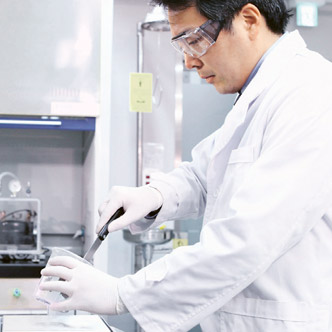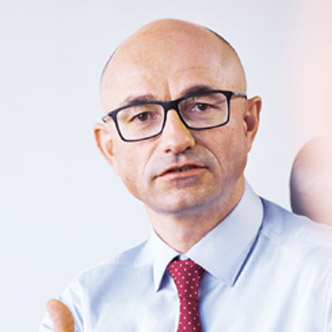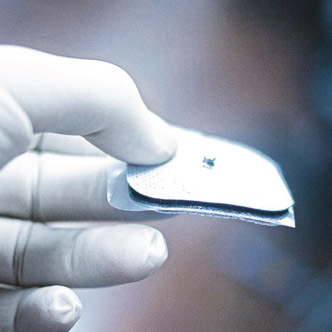20 Explanatory Notes on Segment Reporting
The Group’s segment reporting is in line with the internal organizational and reporting structure. WACKER reports on five operating segments (Silicones, Polymers, Biosolutions, Polysilicon and Siltronic), which are organized and managed autonomously on the basis of the type of products they offer and their different risk and income structures. Business segments are not combined. Any activities or results not assigned to an operating segment are shown under “Other.” Foreign currency gains or losses pertaining to the Siltronic operating segment are recognized directly in that operating segment because an assignment in Siltronic’s sub-group financial statements is possible. Foreign currency gains or losses pertaining to the chemical divisions and the Polysilicon operating segment are shown under “Other.”
Items in the statement of financial position and statement of income are assigned to the operating segments in accordance with the commercial power of disposition. Assets used jointly by several segments are generally shown under “Other” if they cannot be assigned clearly to a particular segment. A similar approach is adopted for borrowed funds. For the geographical regions, the assets and liabilities are assigned in accordance with where the respective Group company’s site is located. Sales are classified in accordance with both the customer’s location and the respective Group company’s site.
WACKER measures the segments’ success using the segment profitability variable EBITDA. EBITDA is calculated by adjusting EBIT for depreciation and amortization, impairments, and write-ups. EBIT consists of the gross profit from sales, selling and general administrative expenses, research and development expenses, and other operating income and expenses including income from investments in joint ventures and associates and other income from investments.
Asset additions, depreciation, amortization and write-ups refer to intangible assets, to property, plant and equipment, to investment property and to financial assets. Internal sales show the sales that are generated between the segments. They are settled mainly on the basis of market prices or planned cost of sales. Segment information is based on the same presentation and accounting methods used for the consolidated financial statements. Receivables and liabilities, provisions, income, expenses, and results between the segments are eliminated in the course of consolidation.
As a rule, the assets reported for the segments encompass all of their assets. Loans, cash and cash equivalents, and deferred tax assets, however, are allocated to the “Other” segment.
The liabilities shown for the segments represent all of their liabilities – except deferred tax liabilities, which are shown under “Other.” The Group’s financial liabilities are allocated to individual segments in proportion to the segment assets. Provisions for pensions are allocated in accordance with Group HR ratios. The advance payments received are allocated directly to the individual segments.
Non-cash expenses and income are divided up between the individual segments as follows:
Other Non-Cash Expenses (+) and Income (–)
| Download XLS |
|
|
|
||
€ million |
2016 |
2015 |
||
|
|
|
||
|
|
|
||
SILICONES |
-1.4 |
1.5 |
||
POLYMERS |
-2.4 |
0.9 |
||
BIOSOLUTIONS |
0.8 |
0.1 |
||
POLYSILICON |
15.1 |
4.3 |
||
SILTRONIC |
2.9 |
-9.7 |
||
Other |
-35.8 |
-36.2 |
||
Total |
-20.8 |
-39.1 |
||
|
|
|
The decline in both advance payments received for polysilicon deliveries and advance payments retained due to the termination of polysilicon contracts amounted to €161.1 million, compared with €214.4 million in the prior year. In the Siltronic segment, advance payments received decreased by €20.1 million, versus €23.9 million in the prior year. The Biosolutions segment accounted for €1.9 million of this decrease.
Important valuation changes not recognized through profit or loss include changes in the market value of derivative financial instruments (cash flow hedging) and changes in value from the remeasurement of defined benefit pension plans.
Of the changes in the market value of derivative financial instruments from cash flow hedging, €5.0 million (versus €13.5 million a year earlier) is attributable to the Siltronic segment and € –1.9 million (versus €8.9 million) to “Other.”
The changes in value due to the remeasurement of defined benefit plans are allocated to the segments as follows:
| Download XLS |
|
|
|
||
€ million |
2016 |
2015 |
||
|
|
|
||
|
|
|
||
SILICONES |
-93.6 |
41.8 |
||
POLYMERS |
-35.4 |
15.3 |
||
BIOSOLUTIONS |
-9.2 |
3.7 |
||
POLYSILICON |
-63.8 |
28.2 |
||
SILTRONIC |
-90.5 |
47.3 |
||
Other |
-167.4 |
77.8 |
||
|
|
|
In addition to Germany, the USA and China are the only countries in which WACKER generates significant sales from a Group viewpoint. Measured in relation to the headquarters of the selling unit, sales amounted to €756.8 million in the USA – after €732.9 million in the previous year – and €406.3 million in China, after €419.5 million the year before. Measured by customer location in the USA and China, the respective sales generated were €773.7 million (€754.1 million in the prior year) and €1,016.0 million (€1,013.8 million in the prior year). WACKER has no major customer whose sales it is obliged to report.
The reconciliation of the segments’ aggregate results with the net income for the year is shown in the following list:
Reconciliation of Segment Results (EBIT)
| Download XLS |
|
|
|
||
€ million |
2016 |
2015 |
||
|
|
|
||
|
|
|
||
Operating result of reporting segments |
365.8 |
472.5 |
||
Consolidation |
0.4 |
0.9 |
||
Group EBIT |
366.2 |
473.4 |
||
Financial result |
-101.4 |
-66.7 |
||
Income before taxes |
264.8 |
406.7 |
||
Income taxes |
-75.5 |
-164.9 |
||
Net income for the year |
189.3 |
241.8 |
||
|
|
|









